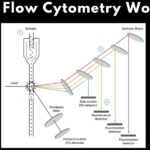In the realm of manufacturing, precision is paramount. Whether crafting intricate components for aerospace applications or fashioning robust parts for automotive assemblies, the demand for accuracy is unyielding. Enter the surface grinder – a stalwart in the arsenal of modern machining, meticulously honing metal surfaces to perfection.
What is a Surface Grinder?
At its core, a surface grinder is a machine tool used to precisely grind down metal surfaces to achieve desired flatness and smoothness. Equipped with an abrasive wheel rotating at high speeds, surface grinders remove the material with precision, ensuring uniformity and accuracy in the finished product. This versatile tool finds its niche across various industries, from aerospace and automotive to tool and die-making.
Evolution of Purpose: Past to Present
The genesis of surface grinding dates back to the early 20th century, where it found initial applications in the production of flat surfaces on metal workpieces. Initially used for rudimentary tasks like flattening rough surfaces, surface grinders have since evolved into sophisticated machinery capable of achieving micron-level precision.
In recent years, surface grinders have transcended their conventional roles, becoming indispensable in modern manufacturing processes. No longer confined to mere surface flattening, these machines now excel in intricate profiling, precision sizing, and achieving mirror-like finishes. This evolution mirrors the advancement of manufacturing demands, where tolerances have become increasingly stringent, and quality is non-negotiable.
Comparative Machinery: Similar Yet Distinct
While surface grinders share similarities with other grinding machines such as cylindrical grinders and tool grinders, they possess distinct characteristics that set them apart. Unlike cylindrical grinders, which primarily focus on grinding external surfaces, surface grinders specialize in refining flat surfaces with unmatched precision. Similarly, while tool grinders excel in sharpening cutting tools, surface grinders excel in achieving superior surface finishes on workpieces.
The Pinnacle of Precision: Manufacturing Advantages
What sets surface grinders apart as the pinnacle of precision in manufacturing? Several factors contribute to their superiority:
- Micron-Level Accuracy: Surface grinders boast the ability to achieve tolerances as tight as a few microns, ensuring unparalleled precision in machining operations. This level of accuracy is crucial in industries where even the slightest deviation can compromise performance and safety.
- Versatility: From grinding ferrous and non-ferrous metals to ceramics and composites, surface grinders exhibit remarkable versatility in material processing. This adaptability makes them indispensable across a myriad of manufacturing applications.
- Efficiency and Consistency: With advancements in automation and CNC technology, modern surface grinders deliver unparalleled efficiency and consistency in machining operations. Automated features streamline production processes, while CNC controls ensure repeatability and uniformity in surface finishes.
- Surface Finish Customization: Surface grinders offer a spectrum of surface finishes, ranging from coarse to mirror-like, catering to diverse aesthetic and functional requirements. This ability to customize surface finishes enhances the aesthetic appeal and functionality of machined components.
- Cost-Effectiveness: Despite their precision and sophistication, surface grinders offer a cost-effective solution for achieving high-quality surface finishes. Compared to manual polishing or alternative machining methods, surface grinding delivers superior results with minimal material wastage, maximizing cost efficiency in manufacturing.
In essence, surface grinders represent the epitome of precision machining, embodying the marriage of cutting-edge technology and timeless craftsmanship. From shaping critical components for aerospace engines to refining intricate moulds for medical devices, these machines continue to redefine the boundaries of possibility in modern manufacturing.
Unveiling Unusual Facts
While the utility of surface grinders in manufacturing is widely recognized, some intriguing facts might surprise even seasoned industry professionals:
- Did you know that the earliest surface grinders were powered by foot pedals, requiring operators to manually control the grinding process?
- Surface grinding was initially developed as a means to overcome the limitations of traditional hand-filing methods in achieving flat surfaces with precision.
- Surface grinders are adept at not only removing material but also imparting specific surface textures and patterns, opening avenues for creative design applications.
In conclusion, surface grinders stand as a testament to human ingenuity and technological innovation, empowering manufacturers to transform raw materials into works of mechanical artistry. As industries continue to evolve and push the boundaries of what’s possible, surface grinders will undoubtedly remain indispensable companions on the journey from metal to mastery.
Published by: Nelly Chavez



















